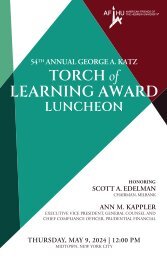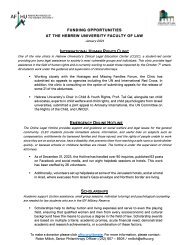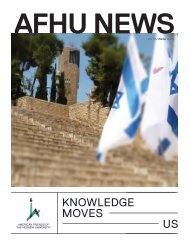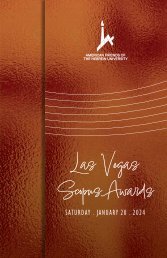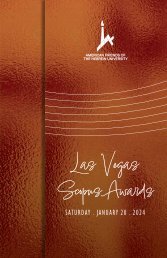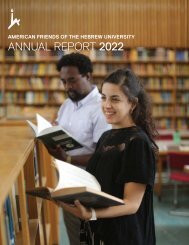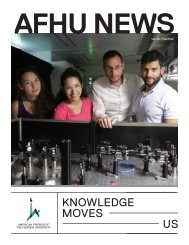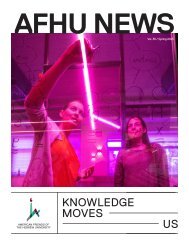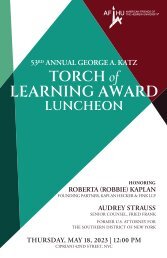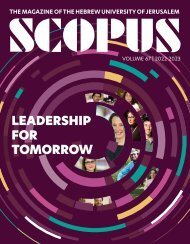Scopus Magazine 2023
Create successful ePaper yourself
Turn your PDF publications into a flip-book with our unique Google optimized e-Paper software.
Technology for a Better Future<br />
Back to<br />
the Future<br />
Climate<br />
Dr. David Helman is preparing for the<br />
future. Specifically, how to feed a growing<br />
population living on a hotter and<br />
drier planet with higher levels of greenhouse<br />
gases in the atmosphere.<br />
One of his current research projects, Wheat-<br />
DryFACE, uses a Free Air Carbon Dioxide (CO 2<br />
) Enrichment<br />
(FACE) system, which he installed on the Joseph Marguleas<br />
Experimental Farm in Rehovot. By releasing CO 2<br />
into the immediate area of his crops, he can simulate<br />
atmospheric conditions as they are projected to be at the<br />
end of the century.<br />
Along with international doctoral student Gabriel Mulero<br />
(Nigeria) and master student Marisol Cervantes (Mexico),<br />
David is using state-of-the-art technology, remote sensing<br />
tools, and numerical modeling to understand how two<br />
wheat varieties cope with these conditions, measuring<br />
water use, energy balance, plant physiology, the quantity<br />
and quality of the crop, and more.<br />
Bio-Inspired<br />
Materials:<br />
Food of the Future<br />
Dr. Gali (Galit) Fichman is one of the newest<br />
faculty members to join the Institute<br />
of Biochemistry, Food Science and Nutrition.<br />
During her doctoral and postdoctoral<br />
studies, she developed innovative<br />
gel materials with a wide range of medical<br />
applications, such as drug delivery, antibacterial<br />
therapy, and more.<br />
Now, she has joined The Hebrew University of Jerusalem<br />
as a Zuckerman Faculty Scholar to further her<br />
research in the direction of food. “My gels, which are<br />
peptide-based, are essentially a giant playground for<br />
researchers across fields. You can design them for any<br />
purpose,” Gali explains.<br />
An edible version of her gel could help create appetizing<br />
textures for futuristic foods, optimize nutrient<br />
or probiotic delivery into our bodies, or even provide<br />
effective scaffolding for growing cultivated meat, which<br />
is projected to be a key food source in the future.<br />
L-R: Graduate students Gabriel Mulero and Marisol Cervantes<br />
with Dr. David Helman in the field.<br />
“I want to translate my findings to develop advanced<br />
gel materials for food and health care,” Gali says. “The<br />
Robert H. Smith Faculty is the right place to be!”






